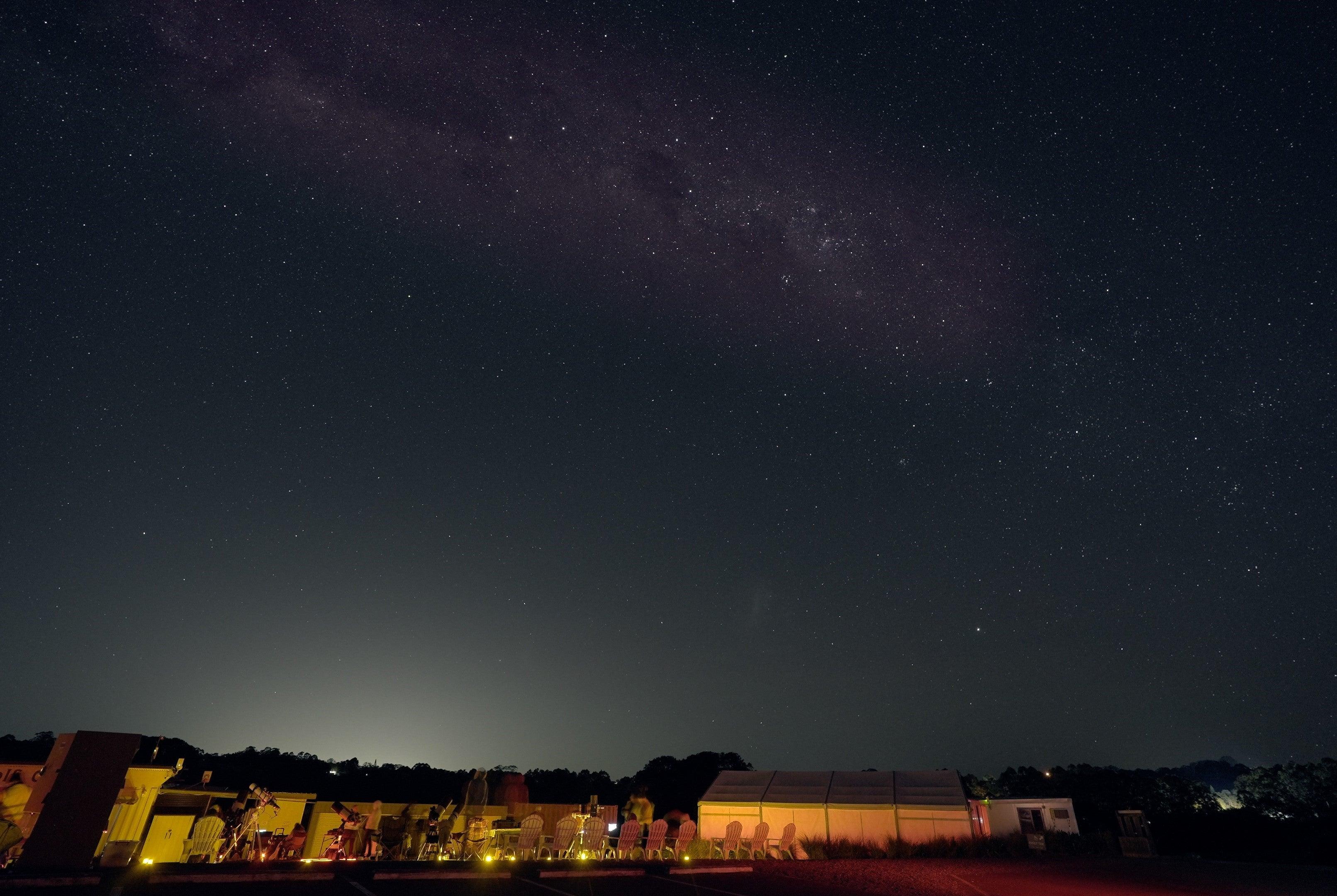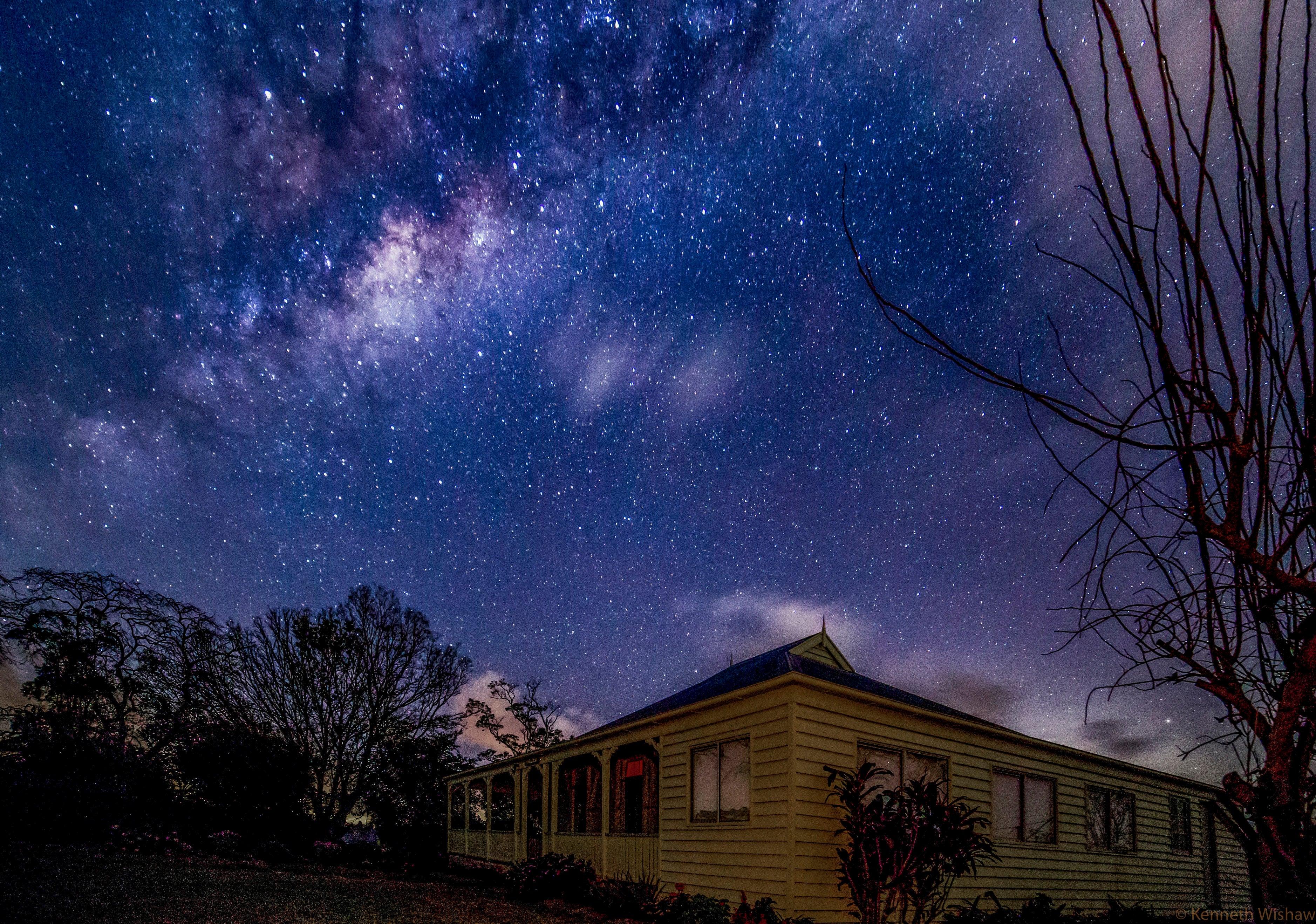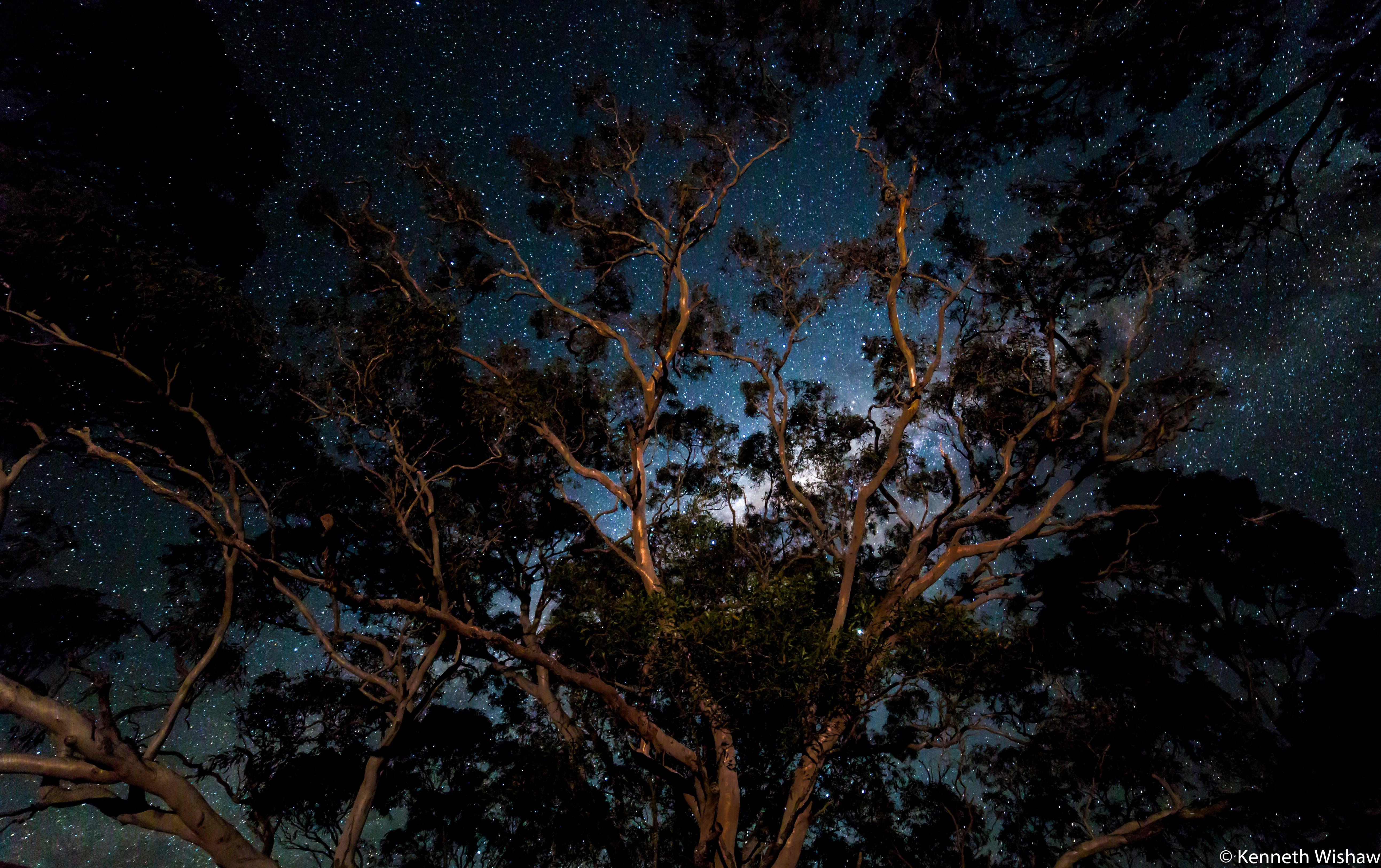Establishing a proposed Sunshine Coast Dark Sky Reserve
Council has commenced a phased community engagement process on a proposal to establish a Sunshine Coast Dark Sky Reserve through the International Dark Sky Places Program.
A Dark Sky Reserve is one of the five designation types offered under the International Dark Sky Places Program which seeks to preserve and protect dark sites through responsible lighting policies and public education.
A dark sky is the natural occurrence of the night sky that is free from human-caused light pollution.
Light pollution can impact on the quality of our night skies and the amount of light pollution on the Sunshine Coast could be expected to increase across the next 20 years and beyond as our population increases.
Reducing light pollution can deliver many benefits to the community including economic, health and wellbeing, emissions reduction and wildlife friendly habitat outcomes.
We are lucky here on the Sunshine Coast to have quality night skies in a number of areas across the region and Council is looking at ways to continue to preserve this amazing asset.
What is a Dark Sky Reserve?
What is a Dark Sky Reserve?
A Dark Sky Reserve designation is across public and/or private land with an exceptional or distinguished quality of starry nights and nocturnal environment that is specifically protected for its scientific, natural, or educational value, its cultural heritage, and/or public enjoyment.
Reserves consist of a ‘core’ area meeting minimum criteria for sky quality and natural darkness, and a ‘buffer’ area that supports dark sky preservation in the core.
Reserves are formed through a partnership of multiple land managers who have recognised the value of the natural night-time environment through regulations and long-term planning. The minimum area of a Dark Sky Reserve is 700 km2.
What are the benefits and opportunities of a Dark Sky Reserve for the Sunshine Coast?
What are the benefits and opportunities of a Dark Sky Reserve for the Sunshine Coast?
A Dark Sky Reserve could have many benefits and opportunities for the Sunshine Coast including:
- Supporting our overall aspirations for a sustainable Sunshine Coast and enhancing our national and international recognition.
- Helping to preserve the hinterland landscape and character of the reserve area through protection of its dark sky environment.
- Attracting visitors to the area and bringing economic benefits to surrounding communities associated with astrotourism.
- Supporting the health and wellbeing of Sunshine Coast residents and visitors.
- Promoting wildlife friendly environments.
- Recognising community efforts being made to protect the night skies of the designated area.
- Enhancing both local and regional public education on the importance of dark sky environments and how community can contribute.
Where is the proposed area for a Dark Sky Reserve on the Sunshine Coast?
Where is the proposed area for a Dark Sky Reserve on the Sunshine Coast?
The proposed area is made up of the Mary River catchment and adjoining State Protected Areas located within the local government area.
The ‘core’ area of the proposed Reserve is the Council owned and managed Kirbys Road Environment Reserve and is close to 3km2 in area .
The ‘buffer’ area surrounds Kirbys Road Environment Reserve which includes townships such as Maleny, Mapleton, Montville, Witta, Flaxton and Conondale.
The area includes two existing observatories.
- Mapleton Observatory
- Maleny Observatory.
What is the process of applying for a Dark Sky Reserve designation?
What is the process of applying for a Dark Sky Reserve designation?
There is a formal written application process for applying for a Dark Sky Reserve designation under the International Dark Sky Places Program.
A comprehensive application includes:
- a lighting management plan and inventory,
- evidence of commitment and action to protecting the night sky and engaging with the community a minimum of 12 months prior to submitting an application.
- Evidence of community support confirming long-term engagement and commitment towards the creation of the Dark Sky Place.
Council and key stakeholders would need to actively work with the International Dark Sky Association as part of the application development.
The application is then submitted to the Dark Sky Places Committee for review, who following assessment would submit recommendations to the International Dark Sky Association Board for consideration and approval.
What were the outcomes of the community consultation in 2024?
What were the outcomes of the community consultation in 2024?
Council sought feedback from the community on the proposal between 20 May and 16 June 2024.
Feedback was received via survey responses, emails, letters, conversations at drop-in sessions and other events and presentations across the region. A summary of the community consultation findings can be found here.
What can I do to help reduce light pollution?
What can I do to help reduce light pollution?
You can help reduce light pollution and protect dark skies by following Dark Sky International’s five principles:
1. Useful - Use light only if it is needed.
2. Targeted - Direct lighting so it falls only where it is needed.
3. Low Level – Light should be no brighter than necessary.
4. Controlled– Use light only when it is needed.
5. Warmer Coloured – Use warmer coloured lights where possible.
Every small action helps. It’s also great for your power bill and the environment.
Where can I stargaze?
Where can I stargaze?
You can find stargazing locations in the proposed reserve here.
Night sky quality in the proposed Dark Sky Reserve
Night sky quality data continues to be captured every season across the proposed reserve area. This data helps us to understand the quality of our night skies and if we meet Dark Sky International requirements for a reserve designation, while also tracking any changes from impacts of light pollution.
The map below shows where night sky measurements have been taken across the proposed reserve.
Click on a star to see the location and the average measurement at each site.
Background
- Proposed Dark Sky Reserve map (PDF 742KB)
- Briefing paper for International Dark Sky Association eligibility assessment – Proposed Sunshine Coast Dark Sky Reserve (PDF 1250KB)
- Proposed Dark Sky Reserve frequently asked questions (PDF 449KB)
- Dark Sky Reserve brochure (PDF 1.17MB)
- Dark Sky Reserve postcard (PDF 423KB)
- Community Consultation Summary October 2025 (PDF 577KB)
- Community Consultation Summary August 2024 (PDF 441KB)
- Fact sheet: Project update June 2025 (PDF 435KB)
- Fact sheet: Draft Lighting Management Plan (PDF 585KB)
- Draft Lighting Management Plan (PDF 1MB)
Stay updated on the project
Keep an eye out on Council's website and this dedicated page or contact the Environment and Sustainability Policy Team at els@sunshinecoast.qld.gov.au.
This project is contributing to our Sunshine Coast Biosphere.




